Born and raised in the capital, photographer Peter Dazeley has London in his bones. He now has three books of London photography to his name – Unseen London, London Uncovered, and London Theatres with a fourth book London Explored coming out this Autumn subject to Chinese printers and the virus, – and it’d be hard to think of many people whose knowledge could rival his when it comes to the city’s hidden-away places.
And this is only a small part of a varied, storied career. Dazeley has been a successful advertising photographer for many years now, as well as exploring the worlds of fine art and still life, including a fascinating series on the paraphernalia owned by notorious East end organised crime kingpins, the Kray twins. Dazeley was even awarded the British Empire Medal in the Queen’s New Year’s Honours List in 2017 for his services to photography and charity.
Dazeley has been a regular face at Fixation over the years, and we were thrilled he found the time to chat with us about his life, his career, and most importantly, photography. So, let’s get started!
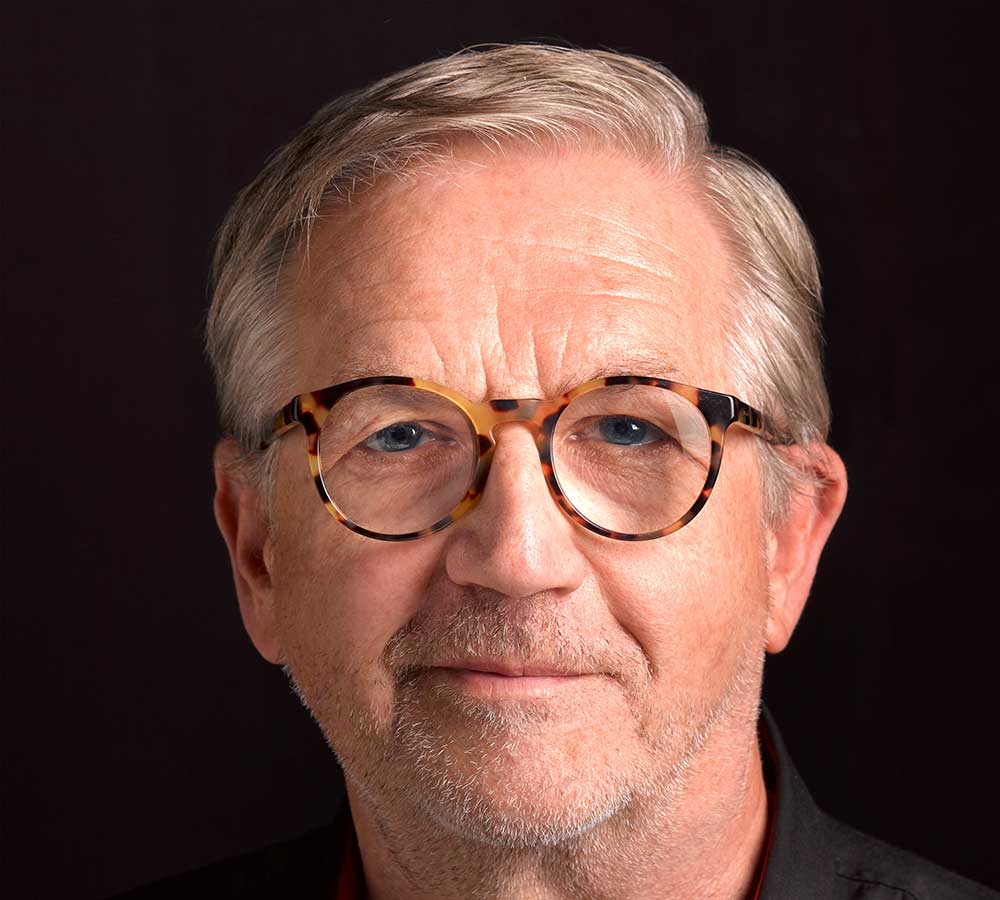 Portrait of Dazeley by Sarah Ryder Richardson
Portrait of Dazeley by Sarah Ryder Richardson
Thanks for taking the time to talk to us, Peter! Let’s start by going back a bit – what made you decide that photography was the career for you?
I went to Holland Park Comprehensive (now known as the Socialist Elton), which was the first purpose-built comprehensive in London. There were two and a half thousand kids, with a swimming pool, three gymnasiums, woodwork, metalwork, engineering, domestic science, a technical drawing office, laboratory, and… photographic studios and darkrooms. And so I got into photography from that – many years later I discovered that I was wildly dyslexic, which made a lot of sense as to why I was so hopeless at school, and then when I was 15 years old I saw an ad in the Evening Standard and went along with my mum for an interview at an advertising studio at the bottom of Fleet Street. And they gave me a job as an assistant photographer.
Had you picked up much knowledge of photography by that point?
I think it was kind of like I’d fallen into it. At school we used to photograph on glass plates, and at my first job we printed from glass plates, and I was just given a great opportunity and encouraged to do little bits on my own and work my way up.
 © Peter Dazeley (Burning Typewriter, illustrating the concept of fake news | Fruit in Water shot for M&S | Jacket on chair shot for Vendome and menswear brand Hackett)
© Peter Dazeley (Burning Typewriter, illustrating the concept of fake news | Fruit in Water shot for M&S | Jacket on chair shot for Vendome and menswear brand Hackett)
Do you think that had an influence on the way you now work in so many different spaces – still life, portraiture, advertising, fine art, etc?
I’ve had assistants over the years who were at university or college and were encouraged to be specifically a portrait photographer or a lifestyle photographer, or a car photographer. The thing to me that seemed more sensible was to take on anything I could get my hands on. I have friends that are food photographers that just shoot food all day long – different clients see me as a different type of photographer.
 © Peter Dazeley (Dancer: Lisa Welham)
© Peter Dazeley (Dancer: Lisa Welham)
 © Peter Dazeley (Labour Party election campaign poster)
© Peter Dazeley (Labour Party election campaign poster)
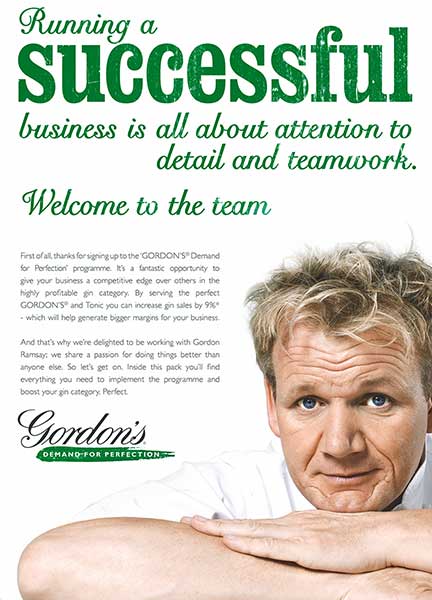 © Peter Dazeley (Godon Ramsay ad, shot for Gordon’s Gin)
© Peter Dazeley (Godon Ramsay ad, shot for Gordon’s Gin)
Working in still-life, both commercially and personally, I’m curious as to how you approach the challenge of assembling your compositions. Is it a lot of planning?
I guess it’s problem-solving. The idea is to be a problem-solver, not a problem to the client, so that you’re really taking care of their needs. And so I’m surrounded by a selection of freelance set-builders, stylists, location-hunters – all sorts of different people who bring different things to the party. I have a retoucher that works for me, and she actually brings some of the work to life. I could never be as good as she is at doing it. It’s really about bringing all those things together.
So it’s quite a collaborative process?
Yes. The crazy thing about being an advertising photographer is that I’ll be working with an art director and we’ll be going down a certain route and I’ll be thinking, ‘This looks terrible, why are we doing it like this?’ And then a couple of months later, I see the ad and I think, ‘Wow, doesn’t that look great? That’s taking me somewhere I would never have been.’ That’s the wonderful collaborative side of working with art directors and designers.
 © Peter Dazeley (Dove Campaign)
© Peter Dazeley (Dove Campaign)
I’ve also been so appreciative of the wonderful service I’ve received from Barry and his team at Fixation over the years, it has been a delight discussing my work with Fixation. For someone who is wildly dyslexic and hates reading instruction booklets, to have them up my sleeve has been fantastic!
Are there any shoots that have been particular highlights?
We did a poster campaign for the Terrence Higgins Trust many years ago. I’d been messing around shooting nudes with an anamorphic lens, which is like a widescreen cinema lens – if you spin it around one way you have long, thin people, and the other way around you get short, fat people. It’s a nice little device because it just looks slightly odd, not too weird, and then we shot it completely out of focus so that you couldn’t recognise anybody. We heard that in the Gay Pride march people were taking the posters off the walls, which was a lovely compliment. Shooting things that were completely out of focus was pretty weird, but it won awards.
 © Peter Dazeley (Solarised Platinum Man, printed by 31 Studios)
© Peter Dazeley (Solarised Platinum Man, printed by 31 Studios)
You work on plenty of your own personal projects too – I’m thinking in particular of your still-life work on the memorabilia of the Kray twins, which is a fascinating study on the way objects reveal character.
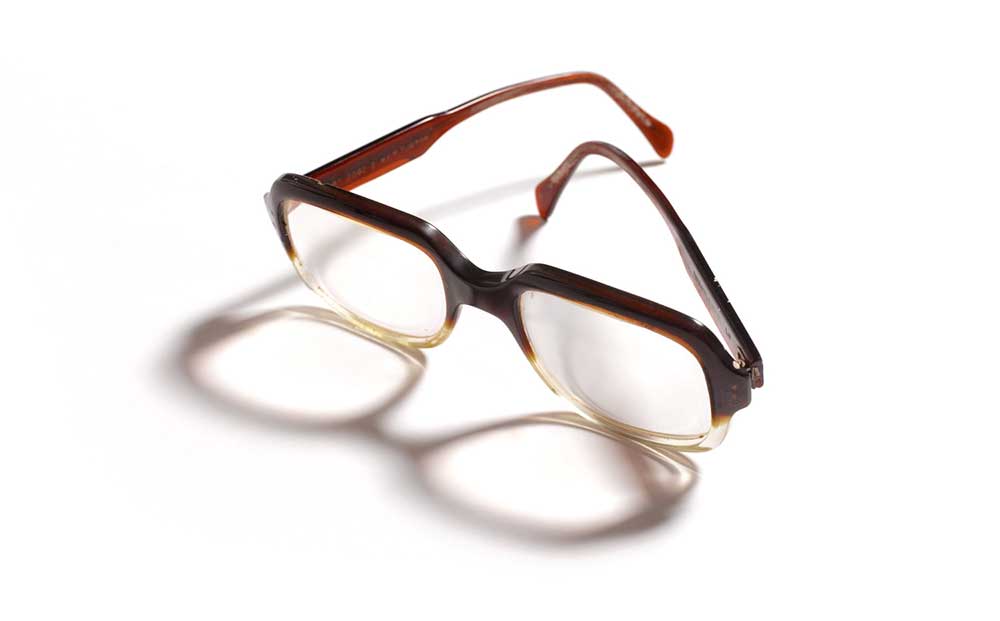 © Peter Dazeley (Ronnie Kray’s Intimidating Glasses)
© Peter Dazeley (Ronnie Kray’s Intimidating Glasses)
Yes – a big part of my life is trying to come up with new ideas, new people, new places or objects to photograph that I can make something of.
What does it take to put a project like that together? It must be nerve-racking at the start when you’re not sure if it’s going to work.
Part of my life is schmoozing. To talk about how things developed, I have a flat on the river Thames overlooking Battersea Power Station, and I managed to wangle getting in there and get let loose in there for a day, and it’s just an amazing place, with what’s left of this art-deco building. It created a wonderful set of pictures, and then my agent sent it around with a newsletter and Creative Review picked it up and ran it. Then of course a lot of people stole it and looted it, but that was how my first book started. It just seemed to me to be a lovely thing to photograph my London, so I set about finding a publisher and we managed to produce the book Unseen London, which took about four years.
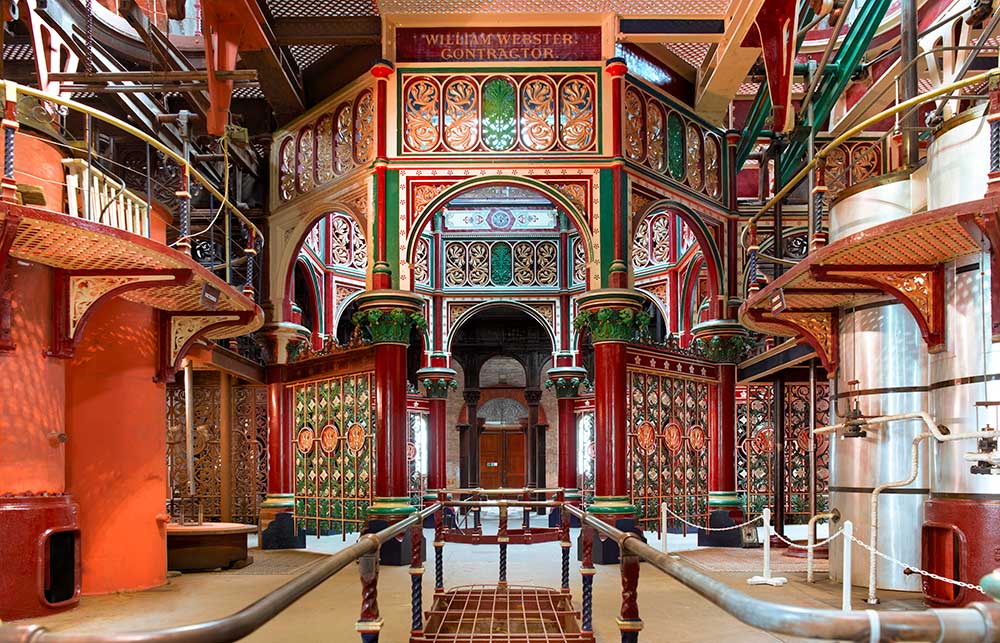 © Peter Dazeley (Crossness Sewage Pumping Station, being restored. Picture from Unseen London)
© Peter Dazeley (Crossness Sewage Pumping Station, being restored. Picture from Unseen London)
How did you go about selecting locations for the book – was it a big list you had to whittle down?
I’m a born and bred Londoner. I thought I knew London well before I produced Unseen London! A lot of the places in that book you can’t actually get to see, like the Ministry of Defence and the inside of Downing Street. So as a reaction to that, I did my second book, which was London Uncovered, featuring places that you could go and see. Having done the first book, it was much easier to do the second one, because I could show them the book and say ‘We’d like to put you in one of these.’ So that one only took me about a year.
In the first two books we included some theatres, and afterwards my publisher suggested that it be nice to do something on London theatres. And that was one of the most exciting books I’ve done. The books are a bit like a hobby; they’re not vastly money-making, especially not when you think about the effort that goes into them.
I’d say the book London Theatres was a highlight of my career, as the writer I worked with on the book, Mike Coveney, managed to get Mark Rylance to write the foreword. I would have been happy with a paragraph, but he wrote about a thousand words of beautiful stuff about what he looks for in a theatre, how the boxes must have people in them rather than technical equipment, how the ceiling affects how he’ll be able to speak and more. We did a book launch at the National Theatre, which for me was a paid gig to be on stage with Sir Mark Rylance talking about theatres, then we sold a whole load of books, signed some books and then had dinner together. So that really was the highlight of my career!
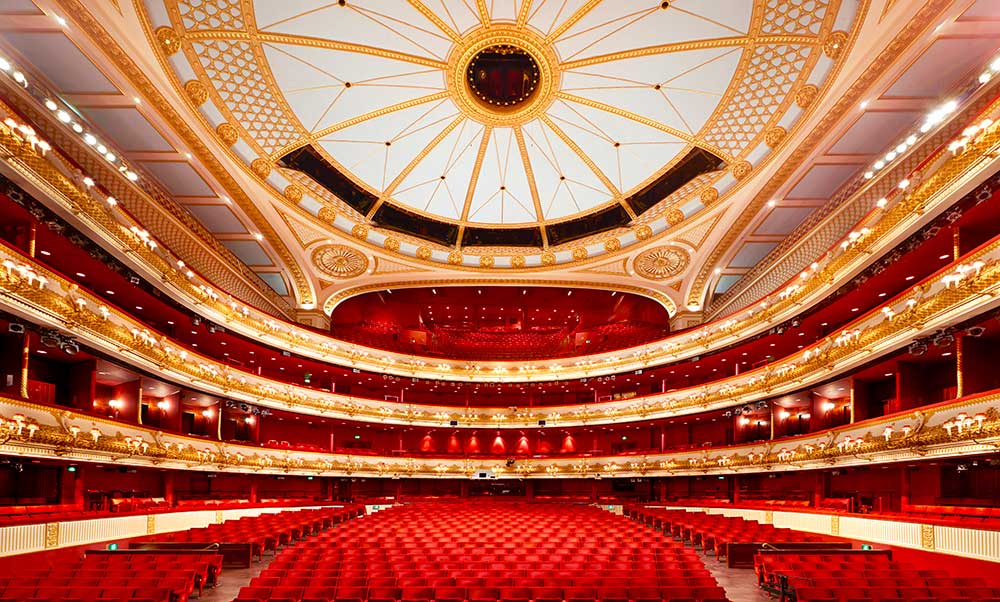 © Peter Dazeley (Royal Opera House Auditorium, from London Theatres)
© Peter Dazeley (Royal Opera House Auditorium, from London Theatres)
And a theatre does feel like a dream subject for a photographer.
I think as punters, we walk into a theatre, we buy a ticket, we go and we sit down, and we just look forward. We don’t see the beauty. They are amazing. Though such expensive things to run – heaven knows how they’re going to be getting through this virus, how long it’ll be before people will be able to sit down next to each other again.
I also wanted to ask about your fine-art work, which you produce on platinum prints.
Well, I don’t produce those prints. I have a wonderful company in Gloucestershire called 31 Studios that produces platinum prints which is quite a time-consuming process. A quick description is: you start off with handmade French watercolour paper, then you apply the emulsion with a very special brush – it takes a kind of genius to actually paint an emulsion onto a piece of paper with no ridges or any marks on it, completely smooth. And then you print it under ultraviolet light – for want of a better word, it’s a recipe from the 1800s, it’s like kind of alchemy really. It produces a print which you put in the developer and it comes up in a flash. It has amazing tones and longevity.
 © Peter Dazeley (Solarised Aladdin Tulips, printed by 31 Studios)
© Peter Dazeley (Solarised Aladdin Tulips, printed by 31 Studios)
I’m sure it’s quite something to see in person – even the scans are gorgeous.
They are wonderful things. But the expense…
I can imagine. So is there anything you haven’t tried yet that you’d like to? Any dream projects?
I’m gearing up to try and work on another book. I think I’ve got a list of about 200 different ideas that I would like to photograph. Sometimes when you research an idea, you find that it’s not that photographable or that interesting, but a lot of times you go and you discover a whole load more. As I get older now and I’m working less commercially, that’s probably what I’m going to do.
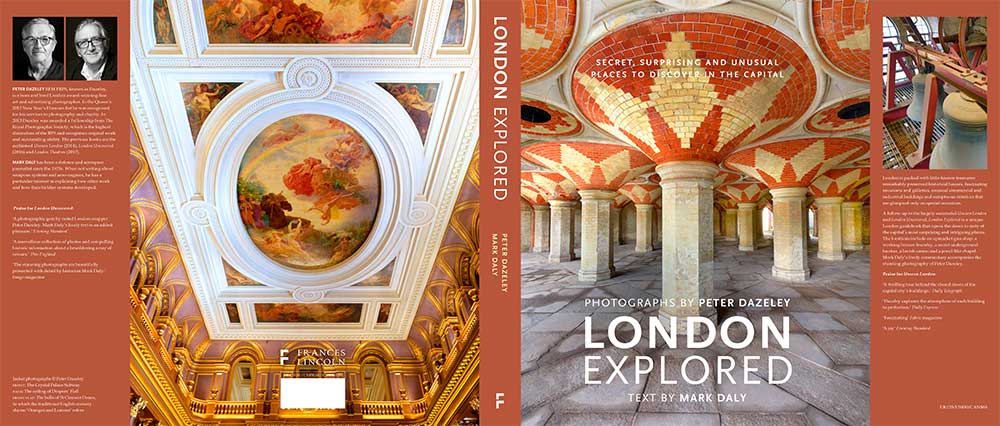 © Peter Dazeley – Cover of Dazeley’s fourth book, London Explored, being published by Quarto Autumn 2020. Cover features: Crystal Palace Subway and the Ceiling of Drapers Hall
© Peter Dazeley – Cover of Dazeley’s fourth book, London Explored, being published by Quarto Autumn 2020. Cover features: Crystal Palace Subway and the Ceiling of Drapers Hall
Peter Dazeley was talking to Jon Stapley. You can see more of his work at www.peterdazeley.com or buy his books from here

